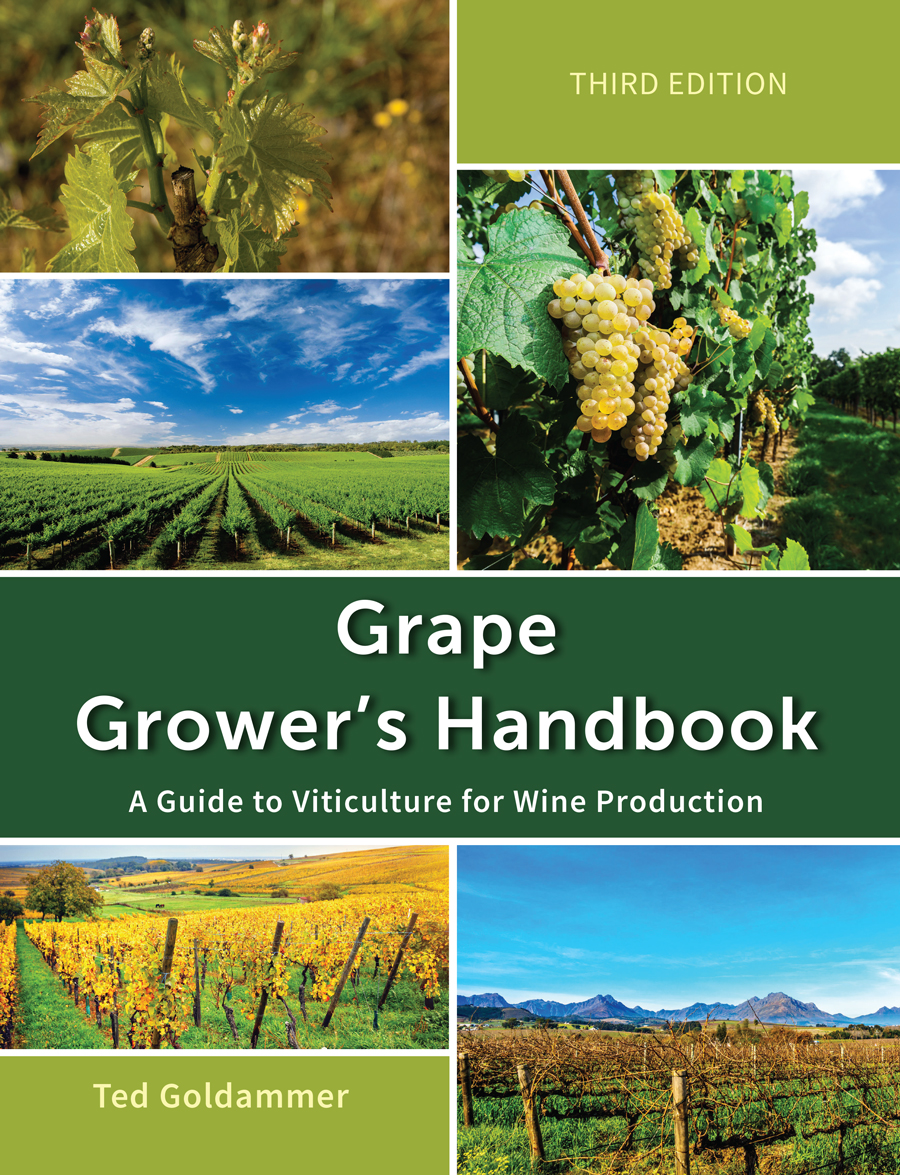Vineyard Wildlife Control
Birds
It’s widely known that vineyards are vulnerable to a wide variety of pest birds. Several species of birds, including robins, starlings, mockingbirds, finches, and blackbirds are common pests of grapes. These birds damage fruit by plucking entire berries from the cluster or pecking holes in the berries (See Figure 27.1). Finches peck at berries and starlings consume whole berries. Starlings in particular have a voracious appetite for grapes so even small flocks can do considerable damage. Damage from starlings is sometimes mistakenly blamed on the bees that congregate on damaged clusters. Birds are daytime feeders and typically begin to feed on grapes when they develop color, which is before maturity. Much like humans, different birds are attracted to grapes for different reasons. These can be narrowed down to a bird’s affinity for a grape’s color, sugar level, acidity, and tannin. In addition, bird damage goes beyond yield loss; pecked grapes can harbor bacterial and fungal pathogens that lead to bunch rot and off-flavors in the wine.
Management Guidelines
There are several types of management measures that have been implemented in vineyards to deter birds from feeding, which include acoustical repellents, visual repellents, birds of prey, and netting. An integrated approach, using a variety of these repellent methods is needed. Before removing birds, it is important to check with local wildlife officials to determine if targeted bird species are protected. Even if the birds are protected, permits for removal can generally be obtained if significant damage is occurring or if human health is a concern
Acoustical Repellents
Acoustical repellents rely on sound to scare birds away. Birds have a hearing range similar to humans, so if people can hear it, birds can hear it. Unlike rodents, birds cannot hear ultrasonic sounds.
Visual Repellents
Visual repellents are useful to in controlling birds in vineyards too; however, birds do not react nearly as much to visual deterrents as they do to acoustical ones. Birds are very capable of adjusting to new objects in a relatively short period of time. This type of deterrent should only be used in a limited time frame and, more appropriately, should be included in an integrated bird-management system.
Birds of Prey
Some growers have tried to set up nesting poles to encourage falcons and hawks to nest in vineyards whereas others have turned to falconry companies for controlling birds. When large avian predators such as falcons are active in the vineyard, fruit-eating birds such as starlings will tend to stay away from the area.
Netting
Vineyard netting (See Figure 27.2) provide a good barrier to feeding birds and offers virtually 100 percent bird protection, but is expensive and cumbersome to apply and remove. Over-the-row netting is used in the United States drapes over a row of vines or multiple rows, depending on the width of the netting. While protecting the grapes for weeks, leaves, tendrils and vines work their way into the mesh; consequently, removing the netting at the end of a season is even more difficult.
Federal Migratory Bird Treaty Act
The Federal Migratory Bird Treaty Act protects all birds except pigeons, house sparrows, and starlings. However, local ordinances may protect bird species not protected by the federal act and/or specify the types of treatments that can be used. Always check local and state laws before attempting to control any bird species.
Click on the following topics for more information on vineyard wildlife control.

